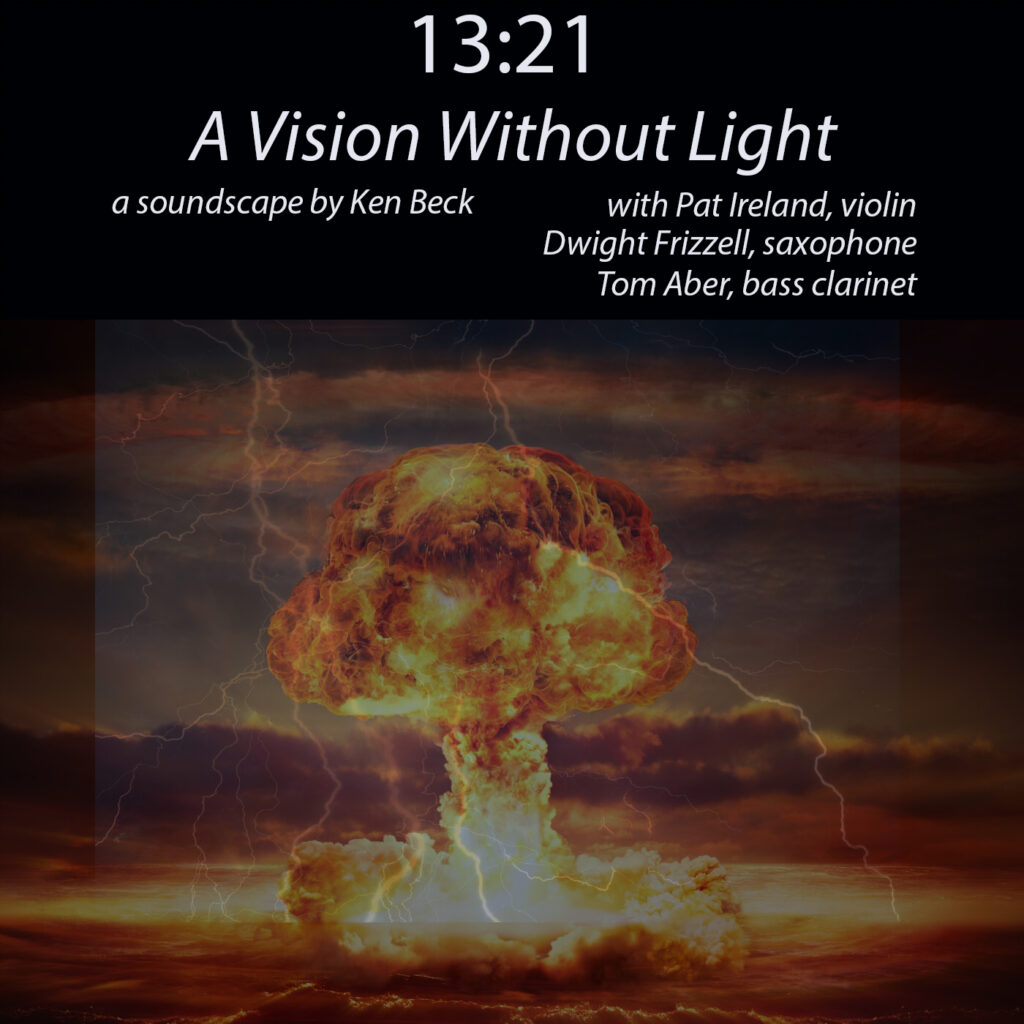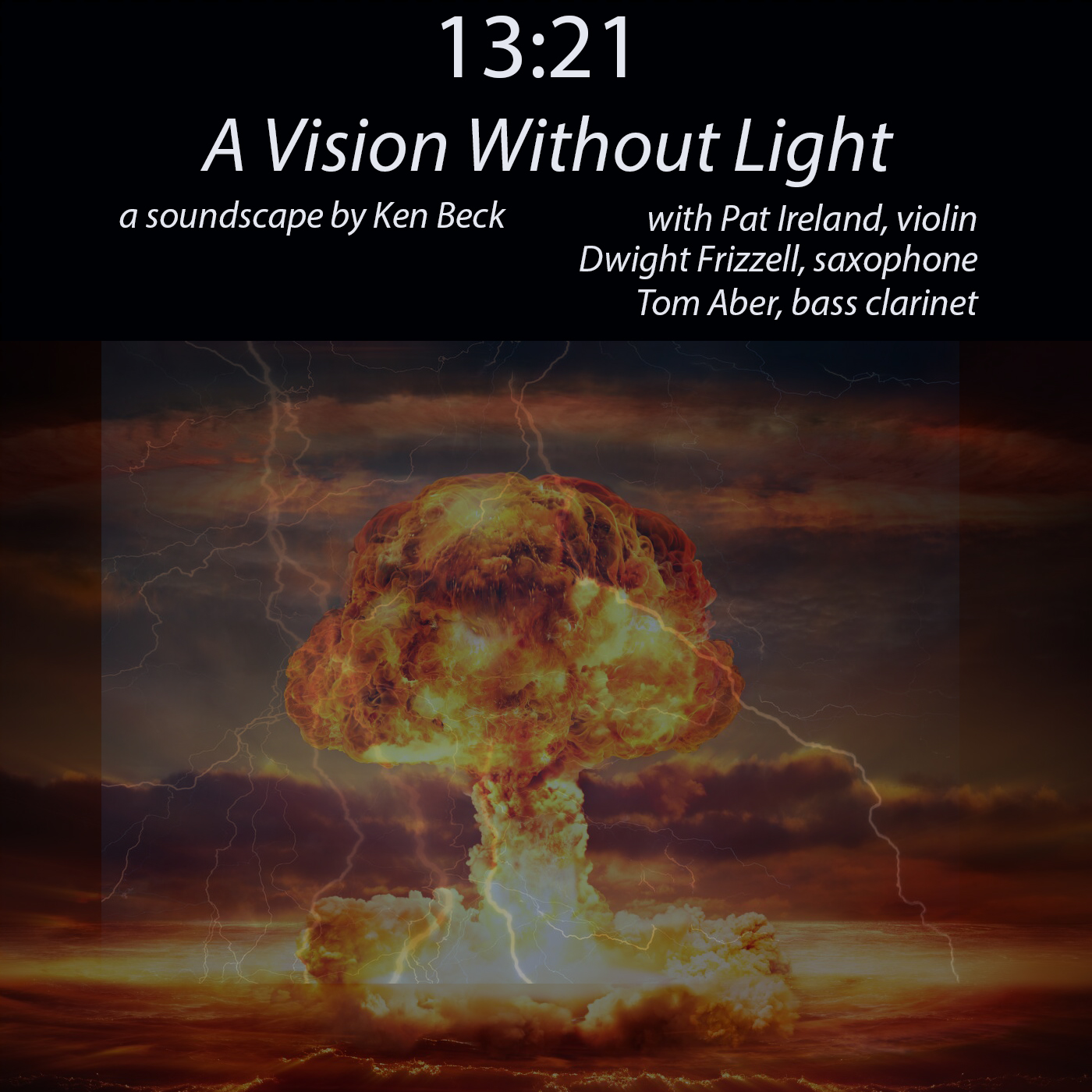Composer’s Notes

The years I spent in Kansas City, Missouri, 1978-1985, were, in retrospect the most fertile and ‘interesting’ in my entire career as an artist. I should, probably, have never left. It was a stretch that only lasted 7 years; the Beatles, as a band, lasted longer. If you include the year in Sioux City, Iowa, I have accounted for only the first 8 years of my post-collegiate life. I’ve already taken a crack at writing a roman a clef about the Boston years. I wrote a novel instead of a memoir, because even though, at Frank Johnson’s urging, I started a journal in ’76, my sense of self and understanding of what was happening to me was too fragmentary and distorted to be worthwhile as memoir. Frank had goaded me into journal keeping, I recall, by telling me my life was interesting enough to require such a document. He had me by the handle of narcissism there! And that went double in Kansas City where I, as they say, found myself. I recall walking from my apartment on 43rd Street towards Penny Lane Records, the studio of the Westport Ballet, and, of course, the Little Angus hamburger joint, thinking ‘I’ve done it! I’m making a living as an artist.‘ It wasn’t much of a living, but I was at least making rent. Even though I was keeping a journal, the record does not tell me what I now need to know, even if I wanted to attempt a memoir. And I might. If I don’t make such a record, no one is going to do it. And life was pretty interesting.
Case in point: the current topic. This ‘avant-garde without there really being a garde to be en avant of,’ multi-collaborator soundscape composition, 13:21 – A Vision Without Light.
The work exists on two spools of Maxell 35-90, which is quarter inch, reel to reel, magnetic tape. The first spool runs at 15 ips and is the material covering the basis of the piece: a synth creation using the Prophet 600. The second spool, running at 7 1/2 ips, is a bounce of a mix of the first spool, and the added improvs by the wind players and the dubbed-in concrète materials, ie., the Kansas City thunder storm, and the Johnson County piano smashing bits. I had acquired the Prophet with money earned from arranging musical greeting cards for Hallmark. Somewhere in there, I’d gotten hit with a legal problem and had hired a lawyer. (I no longer recall what I’d gotten in trouble for, but I remember sweating the legal fee.) The lawyer was an amateur musician, a rank which I had now graduated from, but the man had an Oberheim OB-XA with a DS-X sequencer. The sequencer blew my mind, and somehow I got friendly enough with the lawyer to sequence the chorale segments of “Let Us Break Bread.” I wanted such a thing of my own at the first opportunity, and the Prophet emerged with a built in sequencer just in sync with the Hallmark money. The Prophet was purchased along with a used Tascam 22-4 four track machine. I’m still using both pieces of equipment nearly 40 years later, by the way. Big Dude’s Music city, man. Shades of Blues Brothers and Ray Charles, man.
The ideas for 13:21 were right there, waiting for the gear. Back at Blair (Montgomery Blair High School, Silver Spring, Maryland) I’d been fooling with the idea of an orchestral piece depicting the sinking of the Titanic as a soundscape. I was entranced by reports of the breaking glass, the explosions, and the sound of human agony. I took a stab at making a score in the style of Lutoslawski, which has got to be around here somewhere, with the rest of the oversized stuff. But the piece went unfinished, and I went off to Boston to learn how to, you know, really be a composer. That went in directions entirely unpredictable. I took counterpoint with Hugo Norden, and he drove me nuts. But one day in class, he remarked that the desks of inferior composers are full of unfinished pieces. He espoused a way of working out the structure of a piece in advance that I latched onto with eager abandon. He advocated mapping out everything that was supposed to happen in a piece in what he called a “Fibonacci proportion scheme.” A hasty glance at this wiki article (don’t forget to contribute!) will reveal where the 13:21 comes from. It is a handy way of organizing material, and never mind whether or not Bach did it; I’ve been doing it since Norden, albeit with a HUGE gap in such practices in order to make dance scores with their own event timings and dramatic demands. 😉 In ’13:21,’ the big explosion happens at the 13th minute. Since I was working with tape, and well before the computer age, the timings are not exact. I resisted the temptation, in re-mixing this material, to fix that. I was within the minute, which I consider ‘close enough for jazz.’ What I had wanted out of making ’13:21′ was an expression of that human tragedy idea, the ideas embodied by the Titanic sinking as soundscape, which by the time I got closer to age 30, included a terror of nuclear war, armageddon, the end of civilization, cataclysm in general, and the fury of natural forces beyond our command. Nowadays, I’d ascribe climate change to the litany of worries. I was purging myself of my deep-seated fears through art.
While I was at it, I enlisted the help of those colleagues that were willing. Pat Ireland was certainly willing. Patrick and I had been playing together a bit at this point. He introduced me to several ragtime composers, and certainly had an impact on my Kansas City education in progress. I don’t recall gigging with Pat, but I must have. Anyway, he had an electrified violin and was willing to wail away on my apocalyptic track. I recall his work vividly. We went at it in my apartment with gusto. As the take concluded, the cops were at my door. The long-suffering woman upstairs had called them in desperation. But Pat’s contribution was in the can. At the other end of the cataclysm, there was elegiac relief. Towards this end, Dwight Frizzell and Tom Aber contributed some very fine horn work, adding a layer of spice to the synth lament and a Kansas City thunder storm.
Other interesting material that went into this stew: the Micheal Redden piano smashing event, mentioned above, provided some of that sinking Titanic feeling through the miracle of dubbing tape. Redden’s gig at that time was with, if I recall, a dude named Piano Man Bob. He owned a piano shop and there was a glut of junk instruments to be disposed of. Micheal’s (bizarre) idea was to have the pianos hauled outside to a parking lot and let people pay to swing a sledgehammer at them. I’m quite sure it wasn’t a profit making scheme. It was some serious work to take ones aggressions out on a piano hulk. I naturally showed up and took a few swings, but my primary interest, as usual, was to set up a tape recorder and mics and record the results. There was also a Country Western band playing, so the results on tape were not pristine piano destruction craziness. But in the end, there we were wading around in piles of piano action parts. It made for an eerie lovely sound. As I recall, the cleanup from this stunt was awful. There were cases, soundboards, and harps to be loaded up and carted off in a truck. The stuff that made it into ’13:21′ were the sledgehammer blows. These could be extracted by carefully cueing the tape in the gaps of the band’s set. There is possibly another spool around here with an edited dub of that material.
The current remix was made by copying the four track material to Logic Pro. I did no processing. I did a tiny bit of stereo imaging. In the ’80s, my mixes went to cassette. It feels good to rescue this curious work from that inferior fate.
